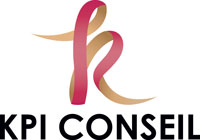Optimizing Working Capital in Industrial Companies
Cash is the oxygen of any industrial business. Behind every euro tied up in operations often lies a hidden inefficiency in working capital management (WCR). And yet, many profitable companies still struggle with cash pressure, delayed collections, or excessive stock levels.
Why? Because the WCR is rarely seen as a strategic performance driver. Optimizing working capital is not just about accounting — it’s about unlocking liquidity, improving competitiveness, and sustaining growth. Let’s explore the often-overlooked levers that can transform your cash flow.
Understanding the True Nature of Industrial Working Capital
Working capital represents the time gap between cash inflows and outflows in the company’s operating cycle.
In industrial settings, this gap tends to widen because of:
- Long production and procurement cycles,
- High-value inventories,
- Extended payment terms from clients, particularly key accounts.
As a result, even profitable businesses may face cash strain.
👉 The issue isn’t a lack of profitability, but rather how long cash remains immobilized within operations.
The Most Overlooked Levers to Optimize WCR
A. Smarter Inventory Management
Inventory is not just a cost — it’s trapped liquidity.
Reducing stock levels without compromising production requires a precise understanding of the supply chain.
Actionable levers:
- Improve sales and production forecasting accuracy,
- Identify slow-moving or obsolete stock,
- Pool inventory across sites or product lines,
- Implement digital stock monitoring via ERP or business intelligence tools.
🎯 Goal: turn inventory into a strategic asset, not a cash drain.
B. Negotiating Better Supplier Terms
Supplier relationships are an underrated source of cash optimization.
Extending payment terms, even slightly, can free significant liquidity.
Best practices:
- Renegotiate payment terms during contract renewals,
- Segment suppliers by volume and criticality,
- Build long-term partnerships to secure flexible payment conditions.
C. Accelerating Customer Payments
Customer receivables are often the biggest driver of cash flow issues.
Yet, most companies underuse the tools available to shorten payment delays.
What to implement:
- Invoice immediately upon delivery or order completion,
- Adopt e-invoicing systems to reduce processing time,
- Automate reminders and apply contractual late-payment penalties,
- Explore selective factoring or reverse factoring for key clients.
D. Using WCR as a Management Tool
In many businesses, the WCR is tracked once a month — but rarely analyzed.
To be effective, it should become a core indicator of financial performance.
A CFO or controller should know:
- How is WCR distributed between stock, receivables, and payables?
- What are the trends in DSO, DPO, and DIO?
- Which operational actions have improved cash flow this month?
👉 The key is to link operational performance with financial results.
The Strategic Role of an External CFO
An external CFO brings an independent and structured approach to working capital optimization:
- Detecting hidden cash traps across the business cycle,
- Implementing automated WCR dashboards,
- Training teams to adopt a cash culture,
- Designing short-term financing scenarios tailored to each entity.
➡️ For industrial groups undergoing growth or restructuring, this guidance helps preserve liquidity while maintaining performance.
In Summary – 3 Steps to Regain Control of Your Working Capital
- Measure each WCR component: inventory, receivables, payables.
- Analyze the operational causes of cash fluctuations.
- Act by aligning finance, production, and sales teams around a single objective: cash generation.
Working capital isn’t just a metric — it’s a mirror of your company’s operational efficiency.
Conclusion – Turn Working Capital into a Competitive Advantage
In today’s uncertain industrial landscape, cash is the ultimate resilience tool.
Optimizing WCR strengthens a company’s investment capacity, negotiation power, and strategic agility.
The companies that master their cash cycle don’t just survive —
they create value faster and grow more sustainably.
🔹 Is your business profitable but constantly short on cash?
🔹 Do you want to identify where liquidity is being tied up in your operations?
👉 Contact KPI CONSEIL for a Working Capital Diagnostic.
In less than 10 days, receive a clear mapping of your cash cycle
and actionable recommendations to release liquidity without increasing debt.
📧 Get in touch today or explore our :
